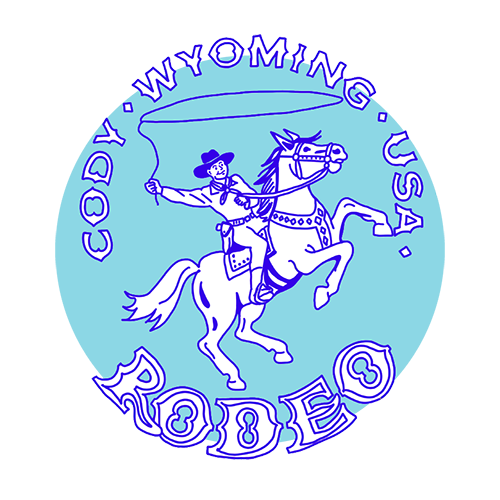Appendix: Rodeo
Keywords: Wife, Girlfriend, Mother-in-Law, Pain, Masculinity, Animal Rights
In Cody, the Rodeo happens for 90 consecutive days in the summer. Cody is dubbed THE RODEO CAPITAL OF THE WORLD. If something is anything in America, it is so in the world, because America to Americans is the world.
Even though it would have been barely more than a 10-minute walk, we drive to the arena. The setting sun draws out the golden colour of the dry grass in the surrounding hills. We are running a little late, the car, we learn, is not a time-machine. As we step out the car, we hear a speaker from the arena thanking the servicemen and veterans for being the executors of American meddling in global politics.
We are with Daniel, an anthropologist studying American conservatism who has been doing research in Meeteetse and wider Wyoming. He tells us we must just have missed the prayer with which the rodeo usually begins. Just then, a choir starts singing the national anthem about THE STAR- SPANGLED BANNER. For the entire duration of the anthem, a cowgirl in pink rides in circles flying said banner. We are just about to take our seats as women on horses, also in silken pink shirts, carry more banners around the ground, this time, the sponsors are announced.
Among them are:
Pepsi
Cody Yellowstone
Pahaska Teepee Resort
Cody Regional Health
Busch Light
Coors
ACE Hardware
American Hat Company
Again, we are spammed with Americana.
Tonight, everyone wears pink for breast cancer awareness. Next to the pink there is a lot of blue, red and white, stars and stripes, jeans and chequered flannel, chaps, leather belts, hats and cowboy boots. There are horses with accessories matching their riders’ colours.
Carrying the show through the night are a 22-year-old moderator with a voice much older and a clown. Together, they entertain and inform the curious crowd which consists of a majority of Yellowstone tourists, some locals, and friends and family of contestants.
And then it pretty much starts with a bang. The first contestant entering the arena does so on a bare back bronc. His horse strides far out the gates, jolting back and forth furiously. He holds on for just over the required 8 seconds. Those seconds feel like an eternity and Daniel tells us, imagine, it used to be 10 seconds. We are all watching spellbound. The buzzer rings and the rider lets go, he falls to the ground, and he stays there, clutching his arm. Daniel says how unusual this is. We respond that it does not seem surprising that you would get hurt riding a bare back bronc, holding on with only one arm, unpredictably falling to the ground while in motion, from the height of a horse. He says, it's unusual that the rider even showed he was in pain.
As we watch on, the myths are coming undone. Some of the preconceptions we have are disproved, others heavily validated. Before we had come to the Rodeo, we were all convinced that to get the animals jerking around like they do, they had rubber bands tied around their balls. Daniel says, no way, how would you get the rubber bands off.
These animals are bred and trained to perform. He tells us to watch closely, to see the belt around the rear end of the animal, on bull and horse alike. The belt is strapped around the animal’s waist inside the gate, just as the rider mounts, before the gates are opened. The belt tells the animal, it is SHOWTIME. Once the rider falls or the 8 seconds are over, two extra riders chase the animal to release it from the belt. Mostly, it stops thrusting immediately and runs straight back into the stables. We learn that both the performance of the rider and of the animal are evaluated. They can each receive a score of up to 50 points.
After the bare back, there is also the saddle bronc, and bull riding. These contests all follow a similar pattern. An anxious group of young men waiting to straddle their animal inside the metal gates. The build-up, the music, the excitement, the fall, the buzzer. The bull riders sometimes wear breastplates and helmets.
We realise quickly that the first rider was an exception. Many of the contestants do not manage to stay on for the 8 seconds. Daniel tells us, these are not professionals yet. They tour competitions to practice and eventually they win enough prize money to be promoted to the professional league. We hear the announcer say something like, “if you don’t win, you’re making tomato soup from ketchup with sardines for dinner”.
We think about how the rodeo developed, out of ranchers’ sheer boredom. As anthropologists, we see how the rodeo provides play and sociality for the people in these remote places. We think about how Wyoming is six times the size of Switzerland, with a population roughly the same as the city of Zurich. There is a lot of space and time to be bored and seek entertainment.
But when we see the team roping, we realise the Rodeo consists of applied skills relevant in real life situations too. Two ranchers race a calf to lasso its head and hind legs respectively. Those that do it well manage to suspend the calf in inertia. In the tie down roping, a lone rancher catches a runaway calf around the neck, pulls it back via the lasso attached around his waist, wrangles the calf to the ground and ties down its legs. It must remain restrained for 6 seconds.
While the preconceptions we had about animal welfare are somewhat refuted, the preconceptions we have about the masculinity and conservatism are more or less validated. The moderator’s comments test our academic woke sensibilities. At one point he says, “in Rodeo, we don’t raise no pansies”. He is telling the audience that in Rodeo, you show no pain, in Rodeo, you must be a man, in Rodeo, there are no homosexuals.
We notice too, that women are often the pun or the resolution of a joke. The clown tells us something his wife doesn’t like about him and neither does his girlfriend. When, for whatever reason, he brings a skunk into the arena, the moderator tells the clown to give it to his mother-in-law. He reiterates what the patriarchy has taught us to think about women: the mother-in-law is evil, the wife is controlling and the girlfriend is a little stupid.
Women do appear in the Rodeo, and not just as the pretty horse riders waving the sponsors’ flags. They shine in the breakaway roping and the barrel racing. The breakaway roping is a light version of the tie down roping, whereby the calf is caught with a lasso that breaks immediately upon fastening. The calf runs off with the rope around its neck. During the barrel racing, we marvel at the fusion between woman and horse. The acceleration, the change in speed, the agility in the turn around the barrels.
At the very end come the children, the legacies. We are surprised to see them up so late. These are all young kids, born onto the back of a horse and into ranching dynasties.
They try themselves at:
Jr Steer Riding (Must have signed waiver by legal parent or guardian)
Jr Bull Riding (Must have signed waiver by legal parent or guardian)
Jr Peewee Barrel Racing (Must have signed waiver by legal parent or guardian)
One girl even beats her mother’s time in the barrel racing.
So much mounting, roping, catching and dominating. We think, and we accidentally say it out aloud, that this is a very masculine way of interacting with nature. To which Daniel responds, to tame nature, you have to understand it. What you see here is great skill on display. The skill, at least, we cannot deny.

Rodeo sound
Author: Nina Khamsy, [email protected]
suggested citation:
Khamsy, Nina. 2025. “Cody Rodeo”. An Ethnographic Multimodal Journey Through Yellowstone National Park and the Wind River Reservation. CUSO. Audio, 1’18. https://anthropology.cuso.ch/yellowstone/11-cody-rodeo
Author: Kiah Rutz, [email protected]
suggested citation:
Rutz, Kiah. 2025. “Appendix: Rodeo”. An Ethnographic Multimodal Journey Through Yellowstone National Park and the Wind River Reservation. CUSO. https://anthropology.cuso.ch/yellowstone/11-cody-rodeo


